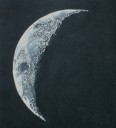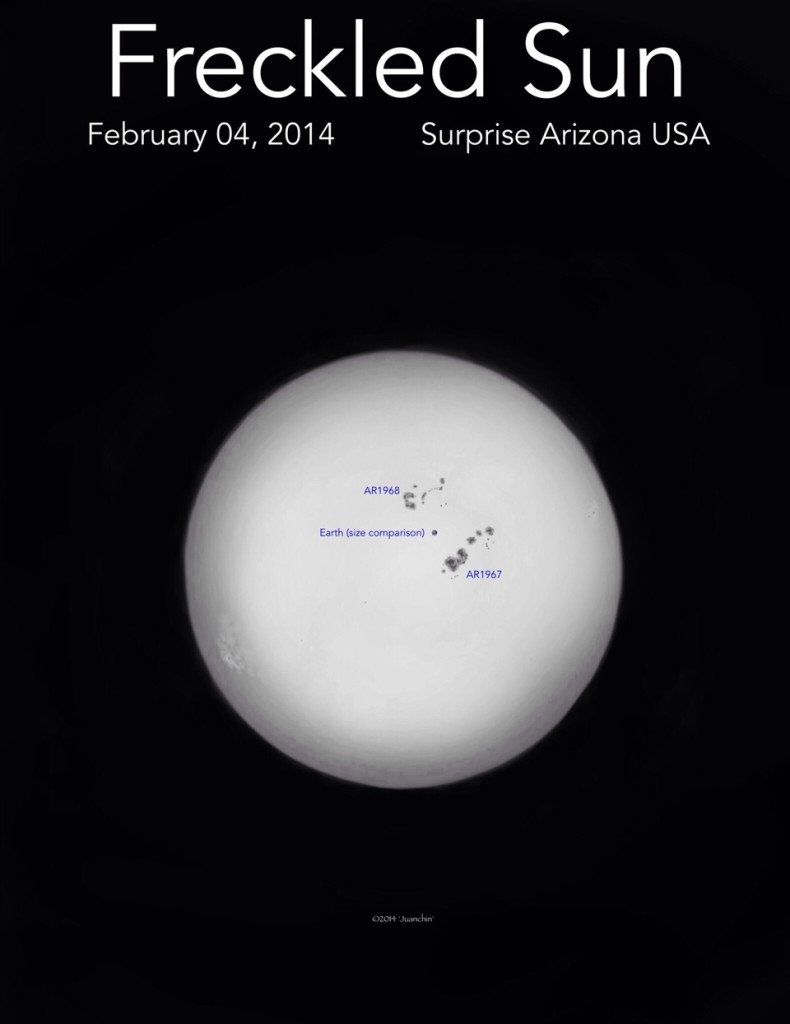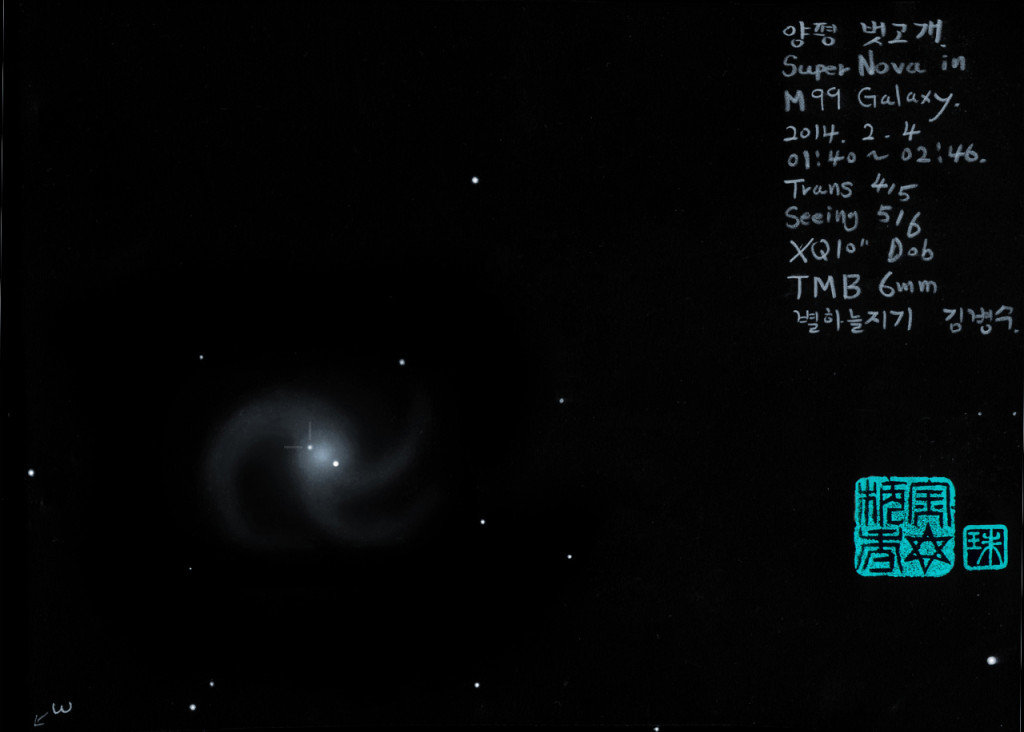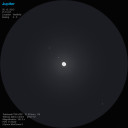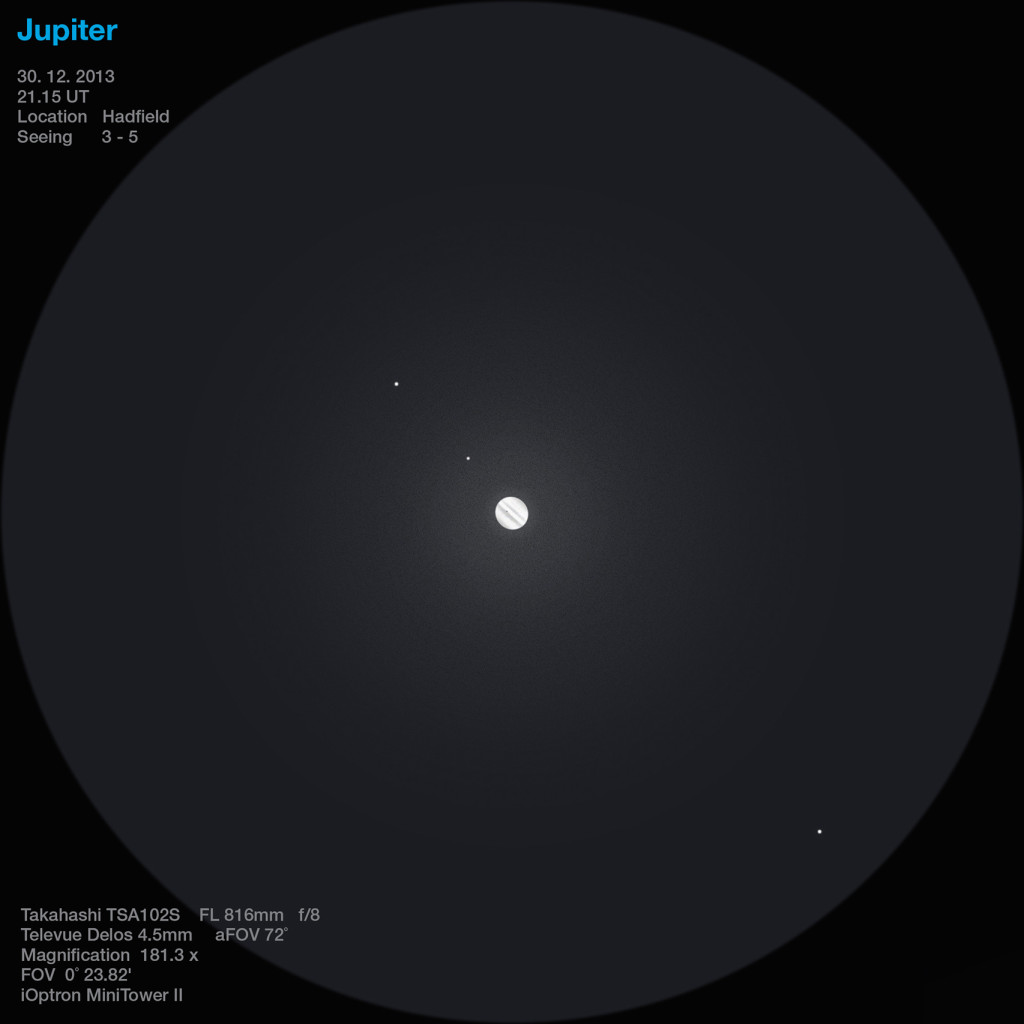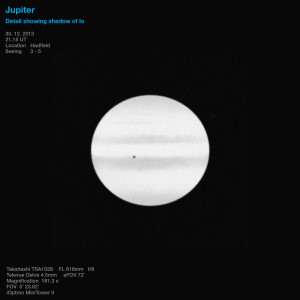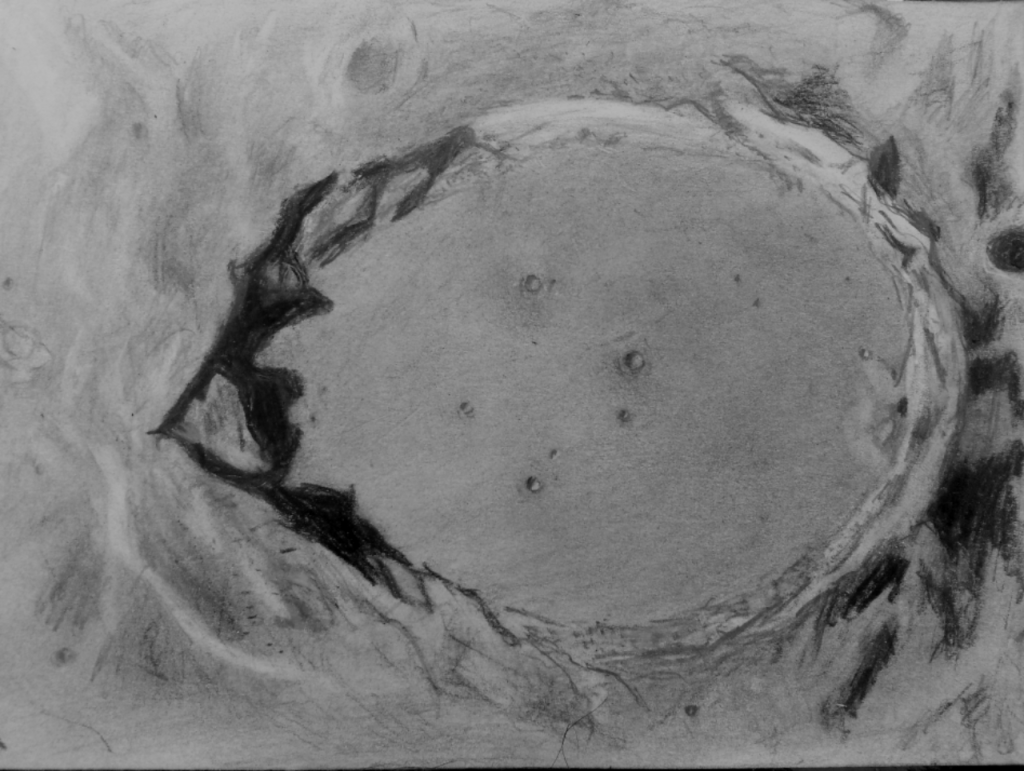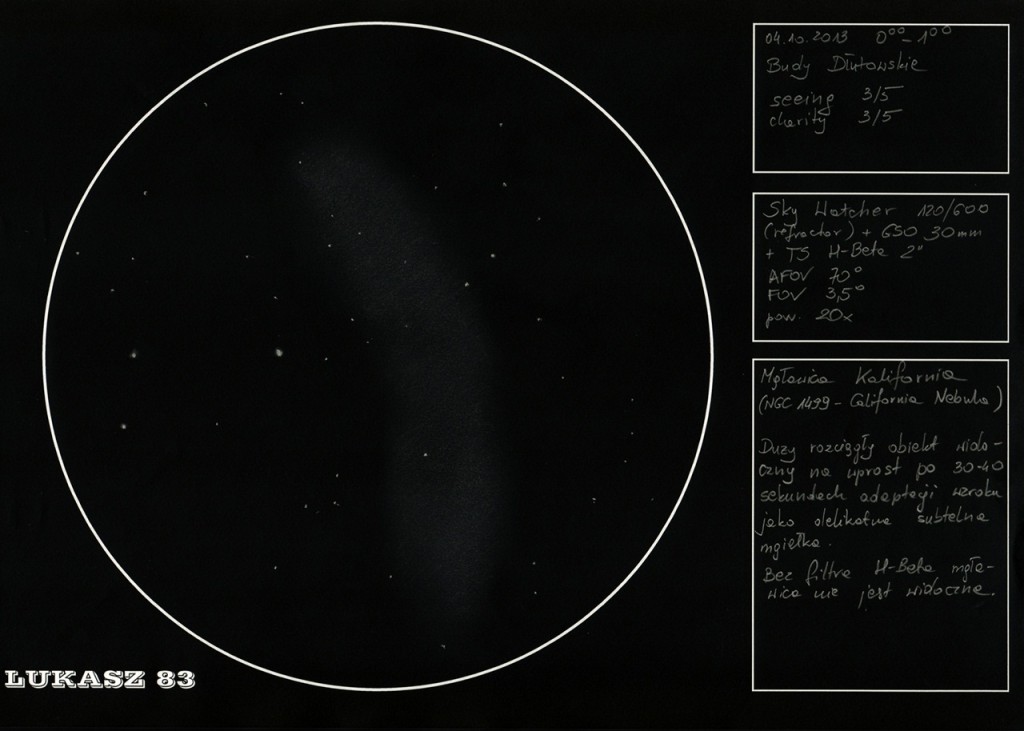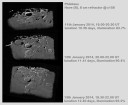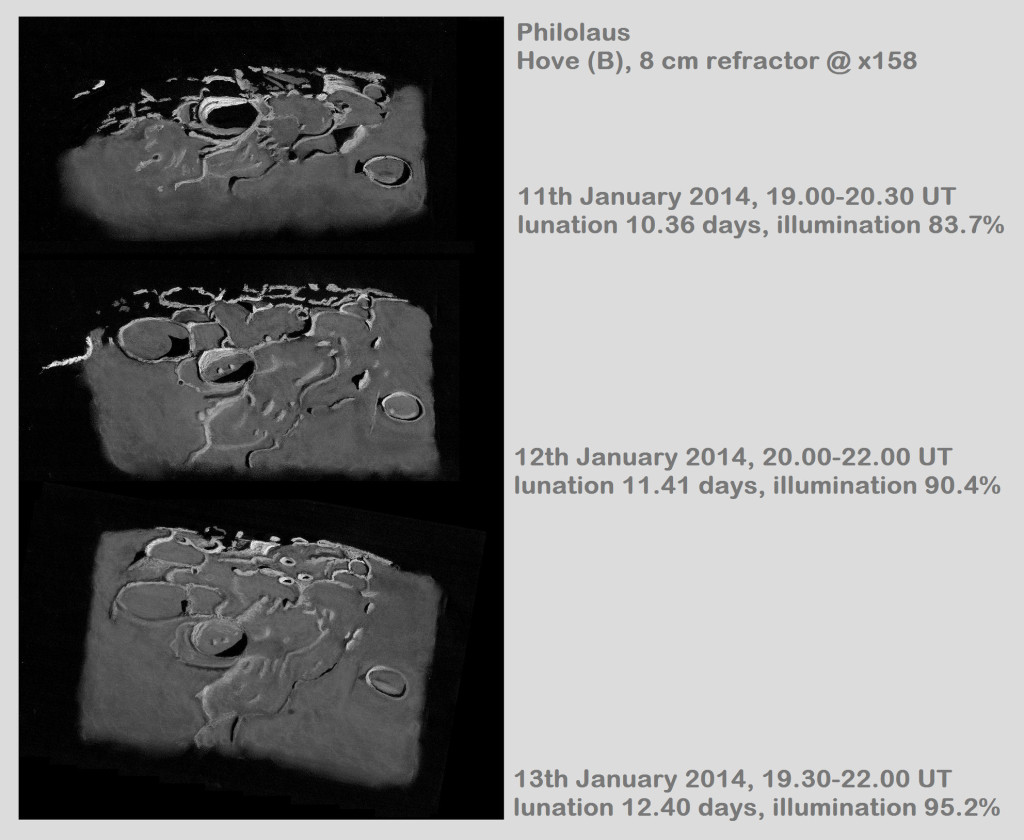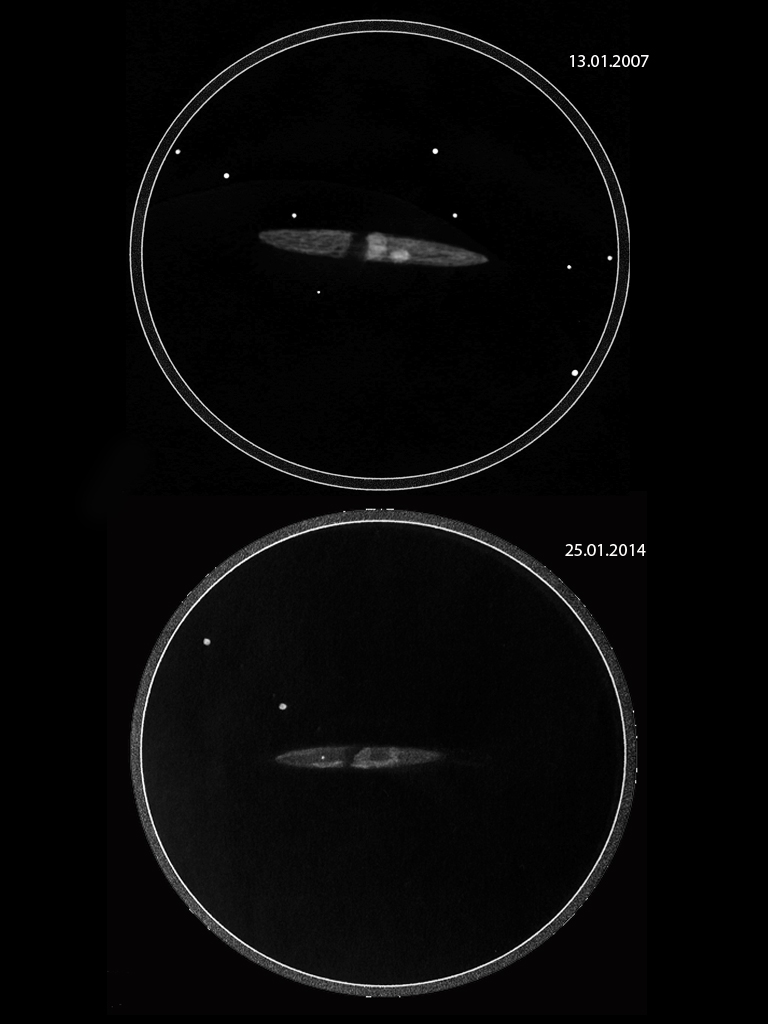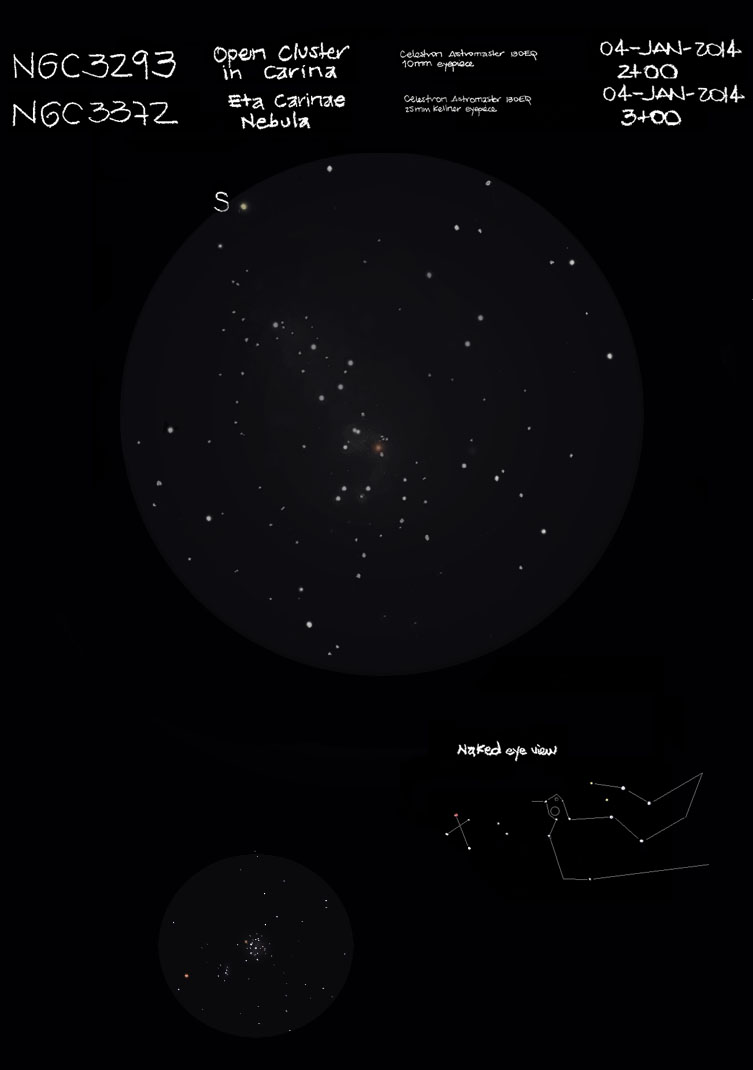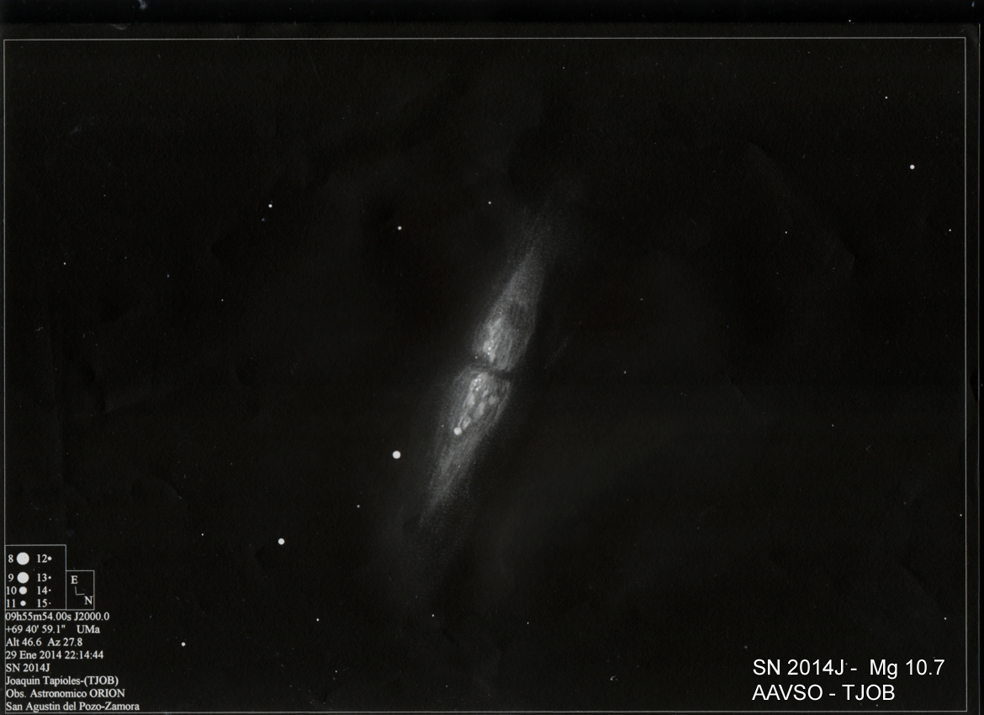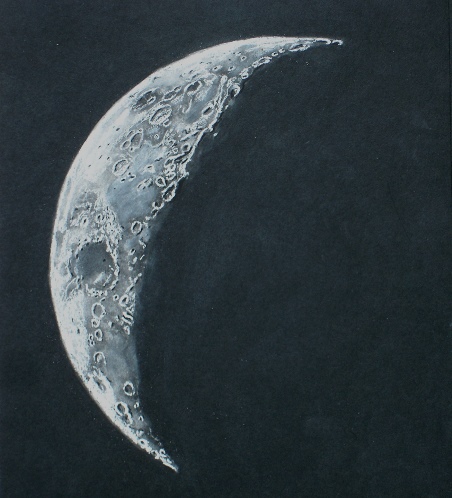
An unusually clear winter day here in Chicagoland with high clouds racing towards us in front of our next round of snow. As twilight began the Moon remained at a good altitude for sketching as long as I worked quickly. During this sketch earthshine became exceptional but high thin clouds began to erase the fine view and heavy clouds ended the sketch before I finished.
Sketching:
For this sketch I used black sketching paper (12” x 14”), white and black Conte’ pastel pencils, blending stumps, white Pearl eraser.
Telescope 4.25”f/5 Dobsonian riding on an equatorial platform, 21mm wide field eyepiece 26x
Date and Time: 02-03-2014; 17:30 – 18:25 local time
Seeing: mostly Antoniadi III
Transparency: clear to overcast
Temperature: -6.7 °C (20°F)
Colongitude: 315.8°
Lunation: 3.85 days
Illumination: 20%
Favorable longitudinal libration
Frank McCabe
